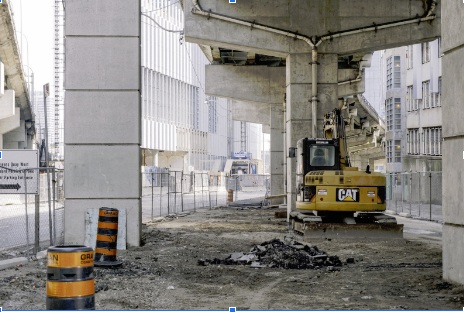There are lots of ways to measure the ebb and flow of economic activity, and the construction industry as a whole is an important indicator of where things stand at any given moment.
Because of this, it’s even possible to drill down even further and focus specifically on construction equipment sales as a means of gaining insights and making predictions about the future of the domestic and global economies.
Let’s talk a little more about this topic and unpack why sales matter in this context, and what aspects of the market are worth paying attention to.
New Construction Equipment Sales: A Sign of Economic Growth?
In terms of deciding whether new construction equipment sales is a good indicator for measuring economic growth, the answer is not always straightforward. It depends on the type of economy, and the types of projects that are being undertaken at any given time.
For instance, projected sales in 2023 are expected to be down on 2018’s highs. Generally speaking, when governments invest in infrastructure development, such as building roads, bridges or other large-scale projects, it can be seen as an indication of an expanding economy with strong investment potential.
Similarly, businesses may also choose to purchase new machinery and earth moving equipment if they see opportunities for increased efficiency or productivity from their investments.
In short, while there is no single definitive measure that suggests how healthy a country’s economy might be based solely on construction equipment sales figures alone, these figures do offer some insight into overall trends in terms of direct investment by individuals and organizations within those economies.
Used Construction Equipment: Making the Most of a Tight Budget?
For those looking to invest in construction equipment but are limited by budget constraints, second hand gear can offer an economically viable option. In these situations, buyers may be able to acquire the likes of used grinder machines at a fraction of the cost and with fewer contractual obligations than if they were buying new.
Used machines come with their own set of challenges, such as how long they will last or whether parts will need replacing. However, due diligence on behalf of both parties can help mitigate this risk.
For some businesses that rely heavily on construction equipment for daily operations and have little room for budgetary flexibility, purchasing second-hand units could be essential in order to stay competitive within their sector.
Ultimately, sales trends relating to used construction equipment provide insight into whether companies are willing and able to make capital investments under more challenging economic conditions.
If new machinery sales are falling and second hand sales are rising, as they are at the moment, it could point to a lack of confidence in the economy, or a desire to return to growth after a downturn without overstretching budgets that are still in the recovery phase.
How Technological Advancements Have Changed the Industry Landscape for Manufacturers and Buyers Alike
The construction equipment industry has experienced a rapid evolution over recent years, as new technologies have emerged to revolutionize production processes. As manufacturers adopt these advancements, buyers can benefit from more efficient machines that are less expensive to operate and maintain than their predecessors.
For example, some modern heavy machinery now comes with automated operational capabilities, reducing labor costs, while others boast advanced safety features that help minimize risks on-site. These developments also provide potential cost savings in terms of fuel consumption, or extended service intervals due to improved efficiency.
Technological breakthroughs have enabled buyers to capitalize on increased long term value propositions represented by new or used industrial machines. This makes them an increasingly attractive option, even at a time when market conditions are changing rapidly, and uncertainty reigns.
What Factors Are Driving Up Prices in the Second-hand Market For Construction Machines?
The second-hand market for construction equipment can be a great way for businesses to save money on their investments. However, there are certain factors that may drive prices up, and understanding these dynamics is essential.
To begin with, demand often dictates price. If more companies or individuals are looking for a particular machine, this will lead to an increase in cost due to competition between buyers.
Additionally, economic trends across various sectors may also affect used equipment prices. So if banks have tightened lending policies, then fewer people might have access to capital, which could impact how much they’re willing (or able) to pay when buying second hand units.
Finally, technological advancements mean older models become increasingly outdated as new machines enter the market. While this could benefit buyers of newer technology over time, it does raise questions about sustainability that need careful consideration before investing in any type of machinery.

